solar system news
Latest from solar system
All 7 planets align in a rare sighting, sky gazers capture ‘planetary parade’
The alignment that was visible on Friday from some parts of the world happens when planets appear on same side of Earth, making them visible in sky at once.

Updated on Mar 01, 2025 03:20 AM IST
Rare ‘planetary parade’: All 7 planets visible in sky for last time until 2040
All seven planets in our solar system align tonight, creating a rare planetary parade visible to stargazers.
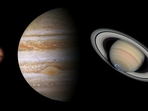
Published on Feb 28, 2025 08:03 PM IST
Seven planets to align: How to watch the 2025 planetary parade
A planetary alignment happens when multiple planets gather closely on one side of the sun at the same time.

Updated on Feb 28, 2025 05:55 AM IST
Astronomers discover new ‘Super-Venus’ exoplanet redefining planetary science
Astronomers discovered Enaiposha, a "Super-Venus" exoplanet 47 light-years away, with a thick atmosphere, challenging previous planetary classifications.

Published on Jan 27, 2025 11:59 AM IST
Mahipal Singh Chouhan
Planet Parade 2025 to be best visible today: When and how to watch?
Six planets aligning in a rare celestial event to be best visible today. The best time to view is 45 minutes post-sunset.

Published on Jan 25, 2025 08:13 PM IST
Seven planets will align in the sky in February. What it means?
The seven planets will not be perfectly aligned, but will appear in an arc across the sky due to their orbital plane in the Solar System.

Published on Jan 21, 2025 09:56 AM IST
Orbital: Read an exclusive excerpt from the Booker Prize-winning novel
The ineffably beautiful book follows six astronauts on board a space station. ‘I wrote it as a way of almost memorialising Earth as our home,’ Harvey says.

Updated on Dec 12, 2024 01:28 PM IST
Samantha Harvey
Earth’s ‘mini-moon’ to depart after nearly two-month stay. What’s next?
An analysis of asteroid 2024 PT5 – ‘mini-moon’ – suggests it may have originated from material ejected from the moon following an ancient collision.

Published on Nov 24, 2024 10:35 PM IST
‘Zombie star’ on Halloween: NASA reveal cosmic horror will awaken after 80 years
A 'zombie star' known as T Coronae Borealis is set to be visible after 80 years.

Published on Nov 01, 2024 11:31 AM IST
Stunning reason that stripped away water from Venus revealed?
Venus lost its water due to stunning interactions of the solar wind with its atmosphere. Now, the planet is simply the “evil” twin of Earth.

Updated on Apr 13, 2024 12:39 PM IST
NASA unveils probe bound for Jupiter's possibly life-sustaining moon
NASA unveils probe bound for Jupiter's possibly life-sustaining moon

Published on Apr 12, 2024 05:59 AM IST
AFP |
Over the quasi-moon: What is Zoozve and how did it get its name?
A tiny moon painted next to Venus on a children’s poster of the solar system puzzled a science show host. What followed gave a space object a new name.

Updated on Mar 15, 2024 10:18 PM IST
Sukanya Datta
NASA's capsule with asteroid samples returns to Earth
NASA's asteroid sample return mission: NASA's capsule carrying asteroid sample returns to Earth, providing insight into planet and solar system formation.

Updated on Sep 24, 2023 09:25 PM IST
When a camera takes a selfie, and reveals a star
In 2022, NASA's Near Infrared Camera took its own selfie for "engineering and alignment purposes.” Will the wonders of this space explorer never cease?

Updated on Aug 29, 2024 10:51 AM IST
Paroma Mukherjee
Chandrayaan-3 mission countdown begins tomorrow; India set to join elite group
Chandrayaan-3 mission will demonstrate safe and soft landing on lunar surface, rover roving on the moon and conduct in-situ scientific experiments

Published on Jul 12, 2023 11:10 PM IST
ANI | | Posted by Singh Rahul Sunilkumar
Watch: ‘Giant mirror’-like alien planet that ‘shouldn't exist’, discovered
Reseachers have discovered an ultra-hot exo-planet that reflects a whopping 80% of the light shone on it by its host star, acting like a “mirror.”

Published on Jul 11, 2023 01:27 PM IST
In search of aliens, ESA set to launch JUICE mission to Jupiter. Know about it
After an odyssey of eight years, the explorer will reach Jupiter in 2031 which will be set off on an Ariane 5 launcher.

Published on Apr 13, 2023 12:59 PM IST
Snehashish Roy
NASA satellite captures 'smiling Sun'. Know the science behind it
National Oceanic and Atmospheric Administration (NOAA), an agency under the United States Department of Commerce, has issued a G1 (minor) geomagnetic storm warning for Saturday, as Earth is currently in the firing line of the trio of solar wind streams, which could hit our planet in the next few days.

Updated on Oct 28, 2022 08:49 PM IST
Yagya Sharma | Edited by Aniruddha Dhar
Fascinating animated video comparing Jupiter's size to other planets goes viral
This animated video that was recently shared on Twitter and went viral, shows how much bigger Jupiter is, compared to planet Earth.
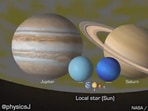
Published on Apr 29, 2022 05:09 PM IST
Sohini Sengupta
How strong was this week's solar eruption? 'Earth may have dodged a bullet'
The massive eruption of February 15 came shorty after the solar explosion of February 4 which destroyed 40 SpaceX satellites.
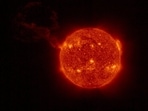
Published on Feb 20, 2022 07:06 AM IST
hindustantimes.com | Written by Poulomi Ghosh
Nasa spacecraft ‘touches’ the Sun. What this historic milestone means
According to Nasa, the success of the Parker Solar Probe represents much more than technological innovation. The spacecraft's landmark achievement has restored hope about solving age-old mysteries about the red-hot star.
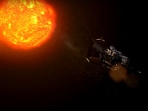
Updated on Dec 15, 2021 11:04 AM IST
Written by Joydeep Bose | Edited by Amit Chaturvedi, Hindustan Times, New Delhi
Saturn, Earth to come the closest today. Check time here
Saturn will appear bright even with the naked eye and it can be seen throughout the night in August.
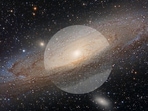
Published on Aug 02, 2021 09:41 AM IST
hindustantimes.com | Written by Meenakshi Ray
Five planets were visible with naked eyes on Sunday
Mercury is usually not visible to the naked eye, but if the sky is clear then it will be easily visible today,” astronomer RC Kapoor said.
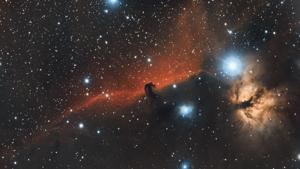
Updated on Jul 19, 2020 02:46 PM IST
Bengaluru | Asian News International | Posted by: Srimoyee Chowdhury
For the first time, astronomers witness birth of new planet around a distant star
The images, taken by the European Southern Observatory’s Very Large Telescope (ESO’s VLT), show a dense disc of dust and gas around a young star AB Aurigae in which astronomers have spotted a prominent spiral structure with a ‘twist’ that marks the site where a planet may be forming.
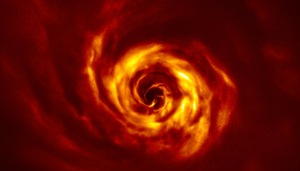
Updated on May 22, 2020 05:14 PM IST
Hindustan Times, New Delhi | hindustantimes.com | Edited by:Anubha Rohatgi
Scientists discover ‘rare’ Super-Earth planet in centre of galaxy
According to the researchers, the planet’s host star is about 10% the mass of our Sun. The Super Earth planet’s mass would be somewhere between that of Earth and Neptune, and would orbit at a location between Venus and Earth from the parent star. The planet’s ‘year’ would be of approximately 617 days.
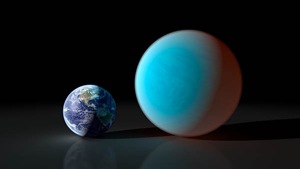
Updated on May 13, 2020 12:25 AM IST
New Delhi | hindustantimes.com | Edited by Anubha Rohatgi
640 light-years from Earth is an ‘ultra-hot giant planet’ where it ‘rains’ iron
One could say that this planet gets rainy in the evening, except it rains iron,” said study co-author David Ehrenreich, a professor at the University of Geneva in Switzerland.
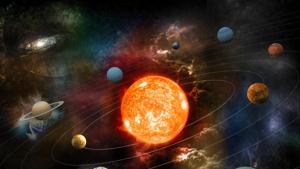
Updated on Mar 12, 2020 01:58 PM IST
London | Press Trust of India
Google marks Leap Day with a doodle
Leap Day, which comes every four years on February 29, is a day observed in various solar calenders including Gregorian calendar.

Updated on Feb 29, 2020 07:37 AM IST
Hindustan Times, New Delhi | HT Correspondent
Astronomers found smallest dwarf planet in our solar system
A team of scientists has presented images that push a known asteroid Hygiea, into the category of a dwarf planet.
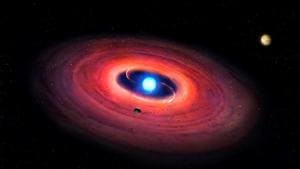
Updated on Nov 05, 2019 08:34 PM IST
Hindustan Times, New Delhi | HT Correspondent
‘Absolute surprise’, says scientist as Jupiter-like planet orbits little star
The star, called GJ 3512, is about 12% the size of our sun, while the planet that orbits it has a mass of at least about half of Jupiter, our solar system’s largest planet.
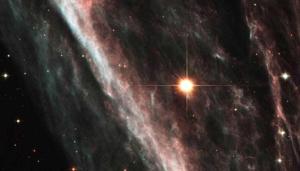
Updated on Sep 27, 2019 05:11 PM IST
Washington | Reuters
Watch | Chandrayaan 2 about to create history: The journey so far
Chandrayaan-2 will aim to determine the extent of water presence on the Moon and understand the origins of the Solar System.
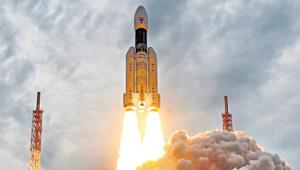
Updated on Jun 26, 2020 06:26 PM IST
Hindustan Times, New Delhi | HT Correspondent
- 1
- 2
- ...





